Whether you’re a food enthusiast and spend many hours cooking something special or only want to be in the kitchen as short as possible, there are some essential things you need to know.
It’s not just about doing things right, but it’s primarily about not getting hurt. Cutting a finger with a knife only takes a moment. Better to know how to move and organize the space that you have available in a kitchen. I discussed this topic with Alexander, my food critic partner, who is an expert in cooking and who knows how to use knives safely.
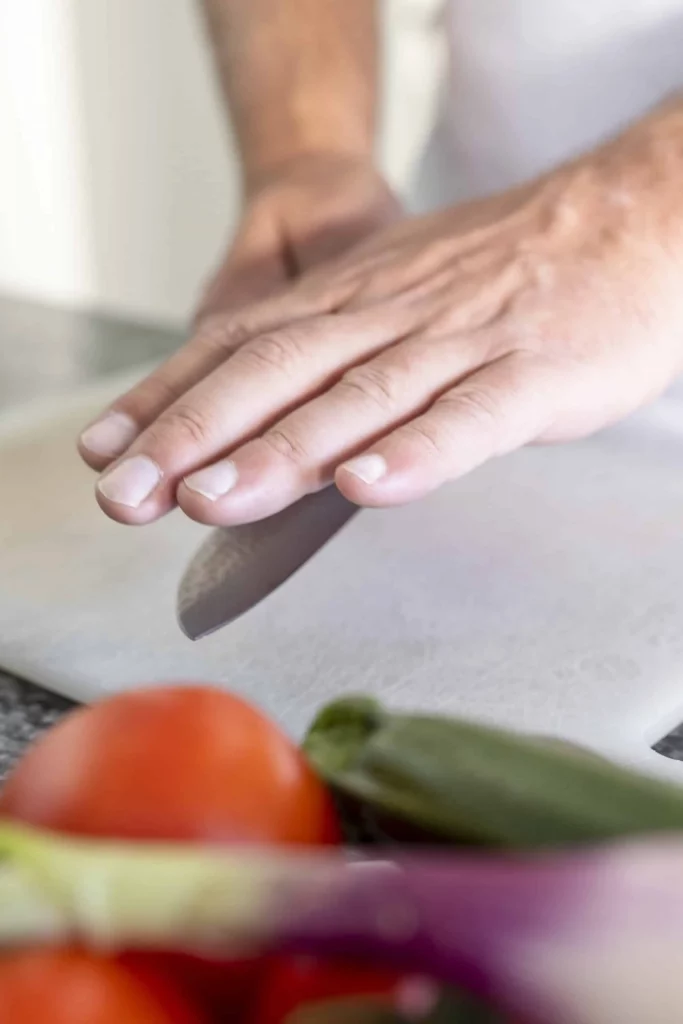
“A knife must always be very sharp. Otherwise, it can be dangerous,” Alexander always tells me. So, yes, your knives should be very sharp.
Here are the ten rules you really need to know when cooking with sharp knives:
- In the kitchen, you have to be comfortable and at ease. Having worked in a Michelin-starred kitchen some years ago, Alexander’s first advice is to organize your station: “Everything has to be comfortable, but the processes will go smoothly when there is no mess,” he said. “If you’re right-handed, work in a flow from left to right. Put what you have to cut on the left, the trashcan goes in front of the cutting board, and all the things ready to use on the right side. If you’re left-handed, of course, reverse the direction of the flow and work from right to left.
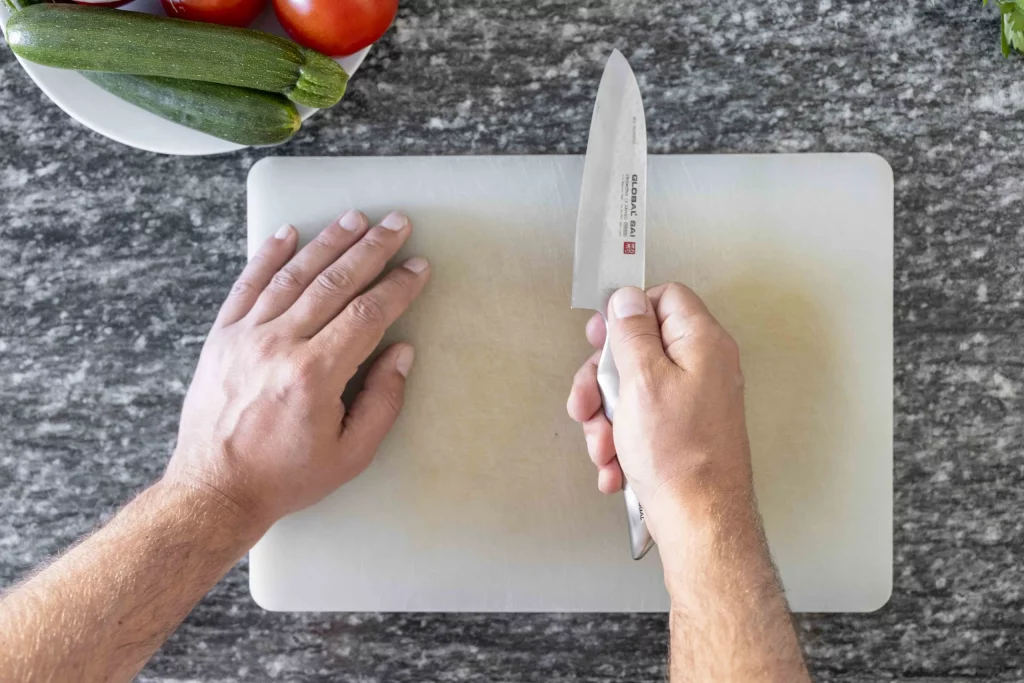
- The cutting board must be stable. If it moves while cutting, it will be unsafe. The solution is to put a piece of a damp cloth under the cutting board. It won’t move anymore, and you can work safely. If you want something more professional, buy a cutting board safety mat.
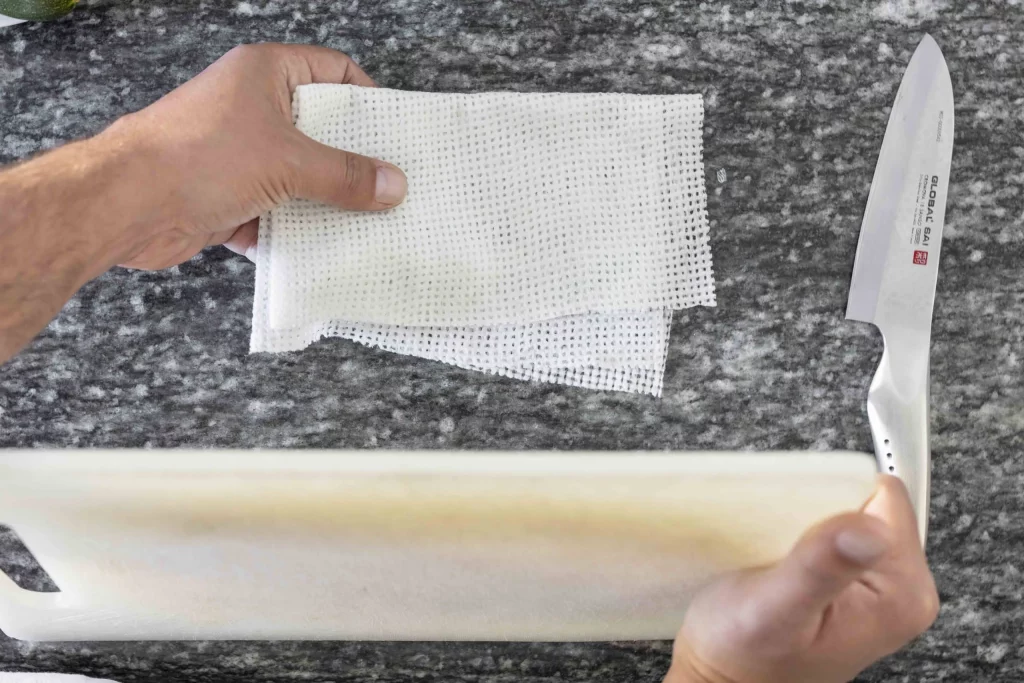
- Remember that it’s essential to use the right knife for your needs. A chef’s knife, which is very versatile, is the right knife for most occasions. A paring knife is perfect for small slices, and a bread knife is suitable for bread and rolls or fruit, like a pineapple.

- When you cut something, you have to take your time. Cutting something quickly, like what you see on TV, can be very dangerous. Keep your eyes on what you’re doing, take your time, and slow down. It’s not a race, so it’s better to make a clean cut than risk getting hurt.
- An important tip: the support hand must never be in line with the blade. No matter what you’re cutting, the blade should always be parallel to the cut, especially when cutting meat.
- Everything that needs to be cut must be stable and not roll around the cutting board. Trim it or cut it in half, so it doesn’t slip out of your hands.
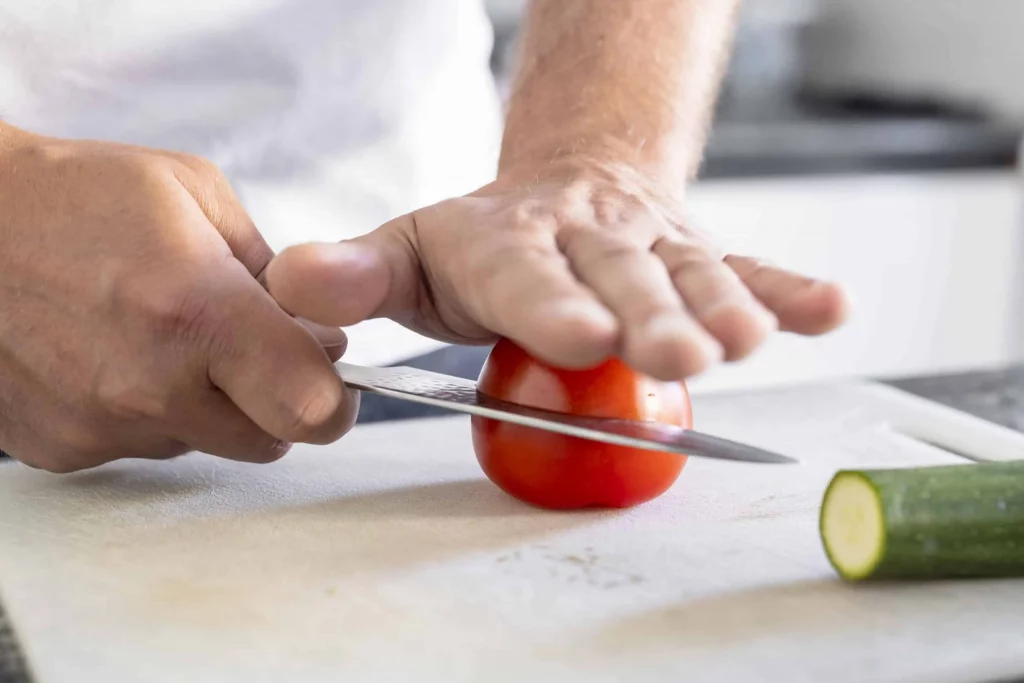
- If you cut meat, chicken breast, for example, use a chef’s knife. The cut should be clean and safe. Rock the blade from the tip to the base.
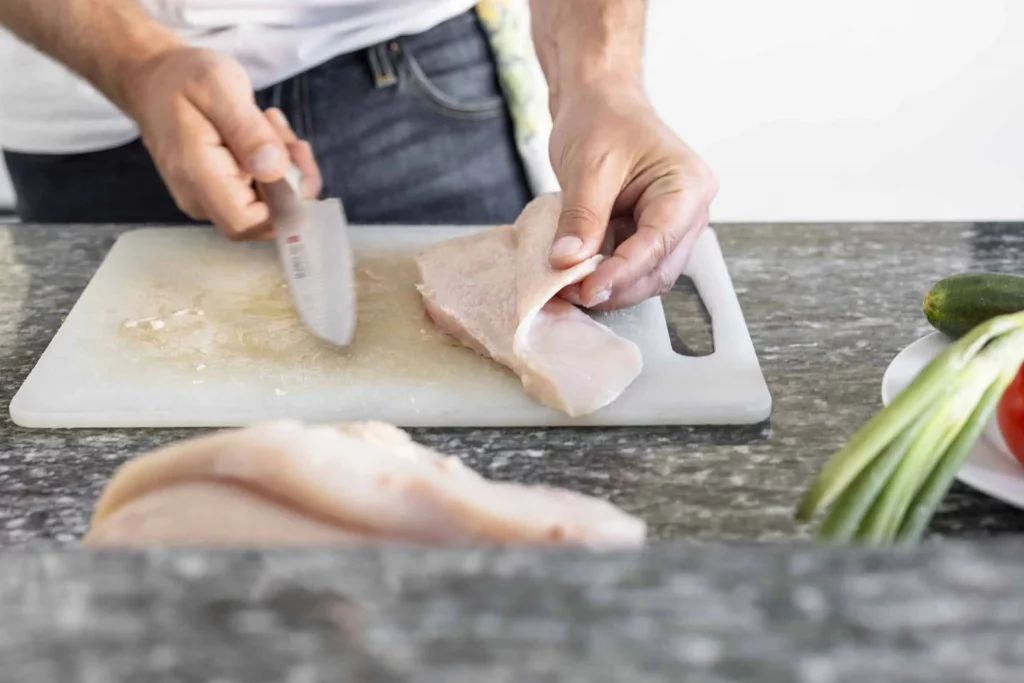
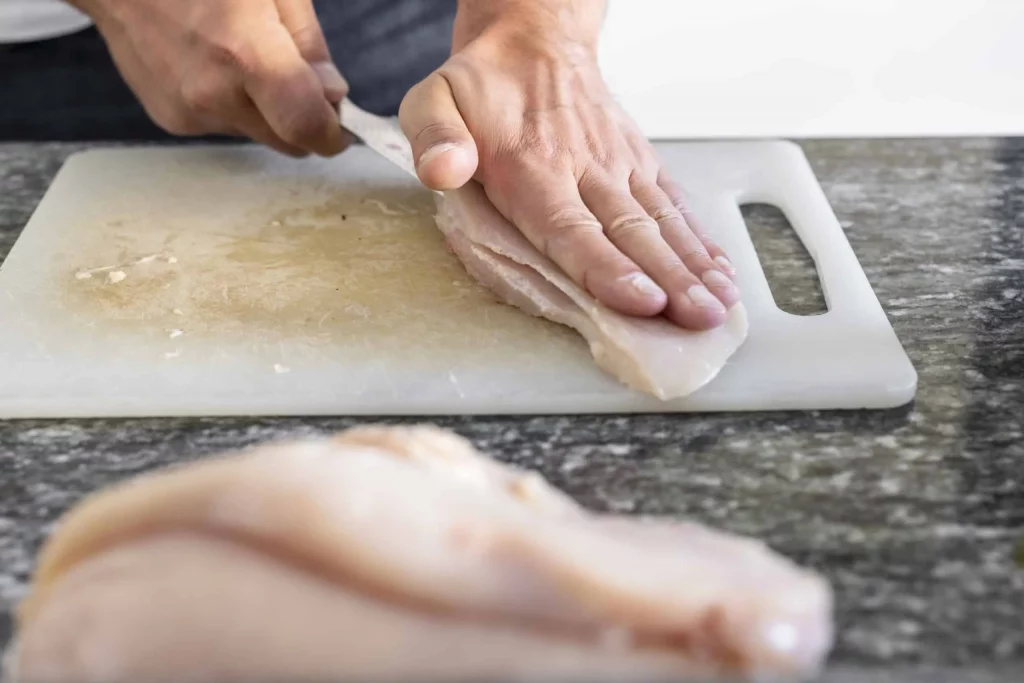
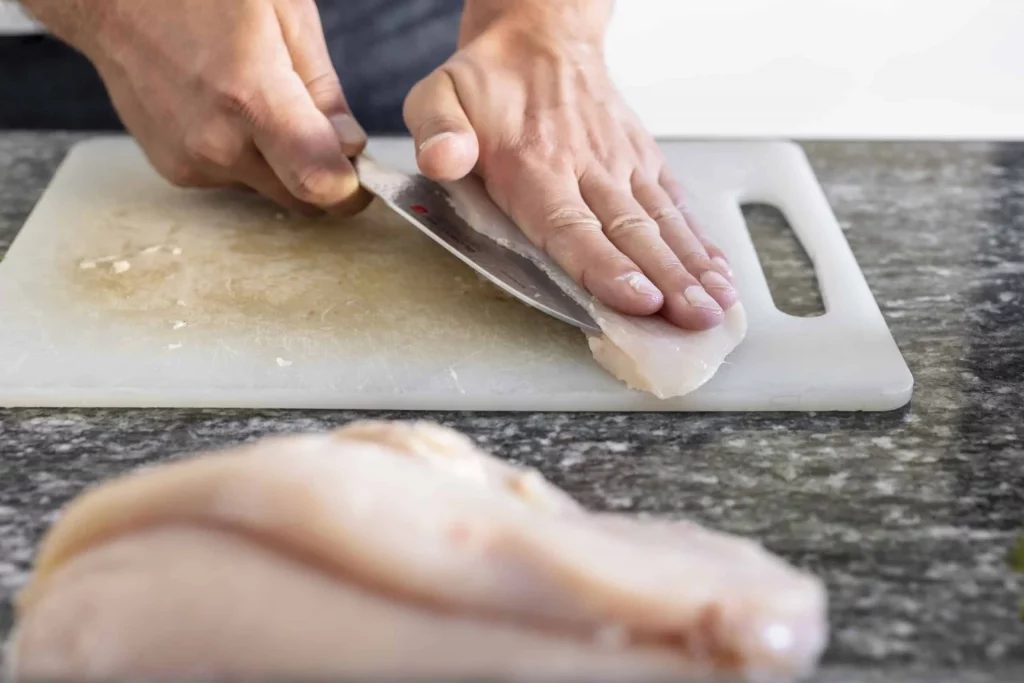
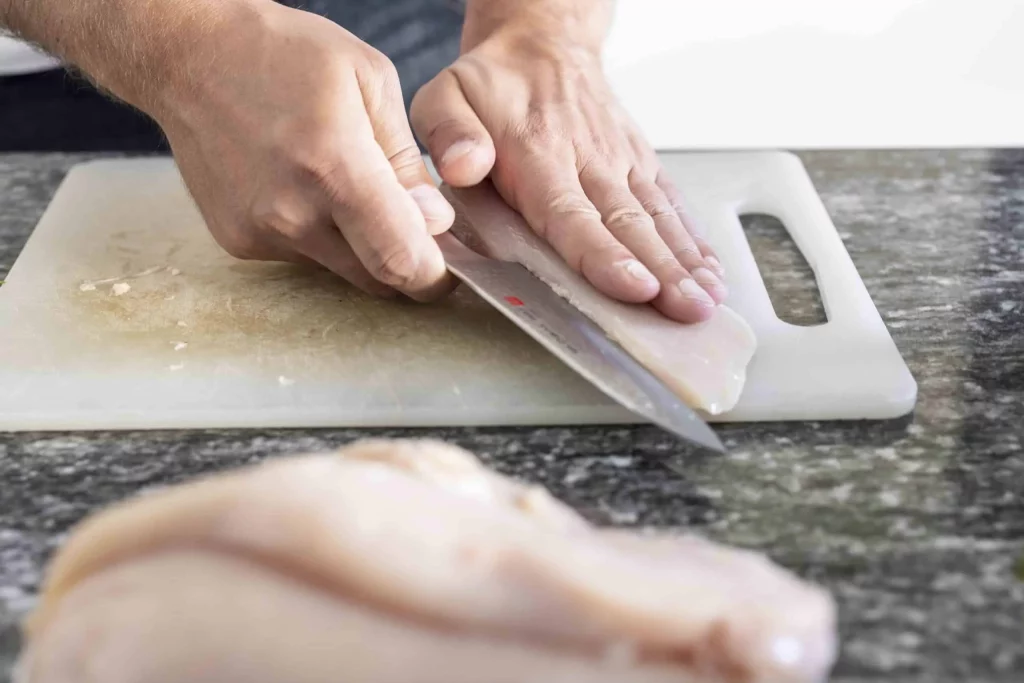
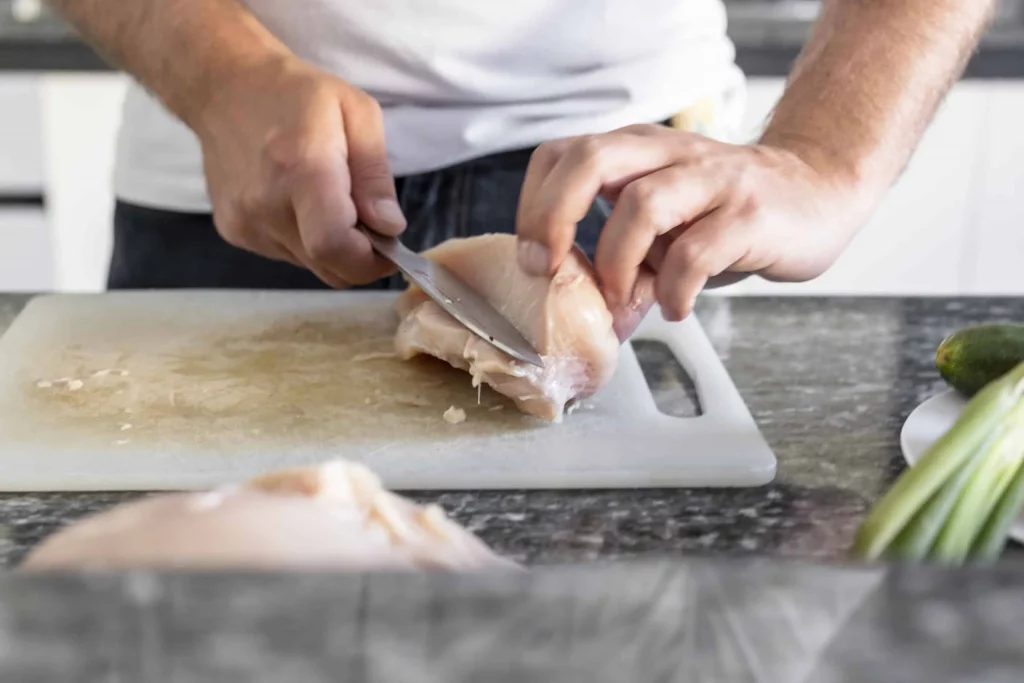
The knife should not be forced, and if you have made a good cut, there should be no “injuries.” The cut should not look like a wound. The same applies to fish; if you are not an expert, it is better to buy fillets already cleaned or have the fish prepared by the person who sold it.
- Do not cut frozen food. The food is too hard, and you would have to put too much pressure on the knife plug. If you encounter some resistance, such as a little bone, place a towel over the spine of the knife and give a firm blow with your wide-open hand. Always make sure your fingers are never near the blade.
- Knives do not go in the dishwasher. Wash them under fresh running water. A good knife will not hold the smell of what you have just cut. Store your knives in a butcher block or on a knife magnet, which takes up much less room. Do not put them in a drawer because when the blades touch each other, they will get damaged;
- If the knife doesn’t cut well, take it to a specialty store (like Williams & Sonoma) and have an expert sharpen it. Don’t try it yourself at home; you could ruin the blade and make it dangerous or unusable.
